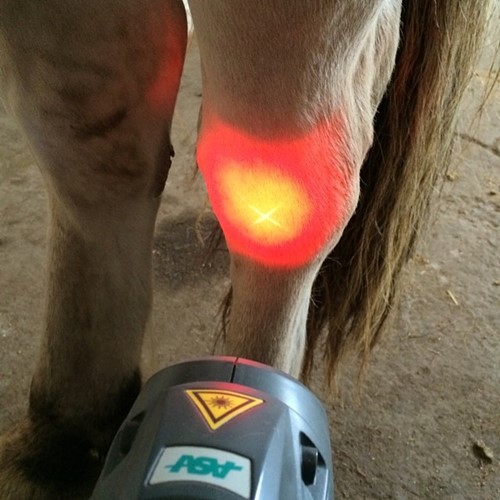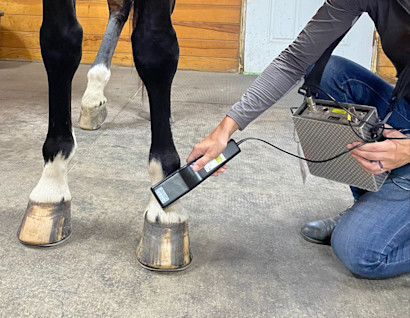Laser Therapy in Equine Therapy: A Modern Approach to Improving Equine Health
Laser therapy has emerged as a crucial method in equine treatment, making use of focused light power to foster mobile repair service and accelerate recovery from a selection of disorders. This non-invasive strategy is especially effective in handling bone and joint injuries, injuries, and inflammatory conditions, substantially improving general steed health and wellness. By promoting mitochondrial task and boosting ATP production, laser therapy not just enhances blood circulation but additionally provides significant pain relief. As this cutting-edge therapy remains to obtain traction, it opens interesting possibilities for attending to persistent problems like joint inflammation and unguis problems, indicating a transformative change in vet care. What makes this method particularly compelling?
Recognizing Laser Therapy
Laser therapy, a non-invasive treatment technique, has actually acquired significant traction in equine medication due to its efficacy in promoting healing and pain relief. This sophisticated therapeutic technique uses focused light power to penetrate cells, cultivating cellular fixing and regeneration. The underlying mechanism includes the excitement of mobile mitochondria, leading to raised manufacturing of adenosine triphosphate (ATP), the power money of cells. Enhanced ATP degrees speed up cells repair processes and minimize swelling, making laser treatment especially reliable for treating bone and joint injuries, injuries, and other inflammatory problems in steeds.
There are a number of kinds of lasers made use of in equine therapy, each with specific wavelengths and power outcomes tailored to different restorative demands. Low-level laser treatment (LLLT), additionally called chilly laser treatment, uses lower power degrees to stimulate cell function without triggering thermal damage. High-intensity laser treatment (HANDLE), in contrast, uses greater power levels to accomplish deeper tissue penetration and more significant restorative impacts.
Veterinarians utilize different laser devices and strategies depending upon the problem being dealt with and the wanted depth of tissue penetration. Proper training and experience are essential for making sure the safe and effective application of laser treatment, thus optimizing its healing capacity while lessening threats.
Benefits for Horse Wellness
With a strong understanding of exactly how laser therapy functions, it is important to explore its many advantages for equine health. By boosting mobile feature, laser treatment advertises faster injury healing and aids in the regrowth of broken cells.
In addition, laser treatment has actually been revealed to enhance blood circulation, therefore improving blood circulation to impacted areas. Boosted blood circulation guarantees that necessary nutrients and oxygen are supplied more efficiently, facilitating the recovery process. Additionally, laser therapy's anti-inflammatory impacts help in reducing swelling and pain, which is critical for the general wellness of the horse.
Discomfort monitoring is another substantial advantage. By launching endorphins and obstructing discomfort signals, laser therapy gives effective, non-invasive remedy for both severe and persistent pain. This can add to enhanced flexibility and high quality of life for learn this here now the animal.
Last but not least, laser therapy is a non-invasive treatment option, decreasing the threat of problems linked with even more intrusive procedures. Its adaptability and efficiency make it an indispensable device in modern equine vet medicine.
Typical Problems Dealt With

One more widespread condition treated with laser therapy is joint inflammation. Furthermore, laser treatment is utilized in the monitoring of injuries.
Horse respiratory system conditions, such as recurrent respiratory tract obstruction (RAO), additionally react favorably to laser treatment. Laser therapy is advantageous in treating unguis issues, including laminitis and abscesses.
Procedure and Safety And Security
Executing laser treatment in equine treatment entails a meticulous procedure to ensure both effectiveness and security. Equine Therapy. The procedure starts with a complete veterinary assessment to identify the viability of laser treatment for the horse's details problem. As soon as deemed ideal, the therapy area is prepared by cleaning and, if necessary, clipping the hair to improve laser penetration
The professional needs to pick the appropriate kind of laser, normally a low-level laser (LLLT) or a high-power laser (HPL), relying on the problem being dealt with. The laser device is after that adjusted to the ideal wavelength, power, and duration settings. During the application, the specialist relocates the laser over the targeted area in a systematic fashion, making certain consistent and even direct exposure.
Safety methods are strictly abided by, consisting of using protective eyewear for both the specialist and the horse. Additionally, it is crucial to monitor the steed for any kind of indicators of discomfort or damaging responses throughout the treatment. Post-treatment, the equine is often given a period of rest to enable the healing impacts to show up.

Future of Equine Laser Therapy
As improvements in vet medicine remain to unfold, the future of equine laser treatment holds site link substantial promise. Emerging innovations and deeper scientific insights are established to refine and increase the applications of laser therapy for equines. One Bonuses of one of the most expected advancements is the assimilation of sophisticated imaging techniques that enable for much more accurate targeting of affected cells, therefore boosting restorative end results. In addition, the development of portable and easy to use laser devices is likely to make this therapy more easily accessible to a broader array of experts and equine proprietors.
Additionally, continuous study right into the molecular and cellular mechanisms of laser therapy will likely yield optimized protocols customized to certain problems, enhancing efficiency and minimizing therapy times. Customized treatment strategies based upon genetic and biochemical pens can become a fact, guaranteeing that each horse gets one of the most appropriate and effective treatment.
Additionally, regulative improvements and standardization of methods will improve the reliability and dependability of laser therapy in equine practice. Equine Therapy. As these advancements remain to emerge, equine laser therapy is poised to become an important part of vet care, offering improved healing and enhanced high quality of life for horses internationally
Final Thought
